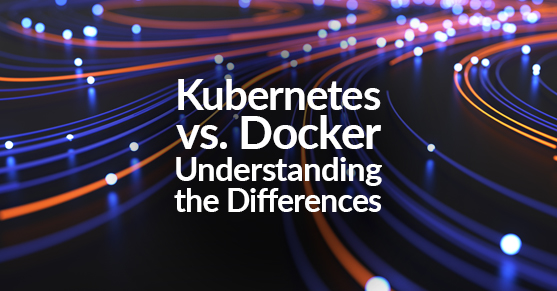Kubernetes and Docker are two technologies that are often used together to deploy and manage containerized applications. However, they are not interchangeable, and each has unique features and capabilities. This blog will explore the differences between Kubernetes and Docker and how they can be used together to deploy and manage containerized applications.
Technology Differences
Docker is a platform for building, shipping, and running containerized applications. It provides an environment for developers to create containers that can run on any platform, regardless of the underlying infrastructure. In addition, Docker uses a layered filesystem to store container images, which makes it easy to share images across different environments.
On the other hand, Kubernetes is a platform for deploying and managing containerized applications. It provides a way to orchestrate multiple containers and manage their lifecycle. Kubernetes uses a declarative configuration model to define the desired state of the system and ensures that the actual state of the system matches the desired state.
While Docker focuses on container creation and management, Kubernetes focuses on container orchestration and management. Kubernetes provides features such as automatic scaling, self-healing, load balancing, and rolling updates, making it ideal for managing complex containerized applications.
Implementation Differences
Docker can be used standalone or with an orchestrator like Kubernetes. Organizations can use Docker to build and package their applications into Docker images, which can then be deployed to a Docker host. However, managing multiple containers across multiple hosts can be challenging without an orchestrator like Kubernetes.
Kubernetes provides a way to manage multiple containers across multiple hosts. It can be used with different container runtimes, including Docker, to deploy and manage containerized applications. Kubernetes uses a master-slave architecture to manage the cluster, with the master node responsible for scheduling and coordinating tasks across the slave nodes.
While Kubernetes provides a way to manage multiple containers across multiple hosts, Docker focuses on container creation and management. As a result, Docker makes creating, packaging, and sharing containerized applications easy across different environments.
Cost
Both Kubernetes and Docker are open-source technologies, which means that they are free to use. However, organizations may incur costs for infrastructure, support, and additional tools and services.
Kubernetes can be deployed on any cloud provider or on-premises infrastructure, which gives organizations flexibility in terms of cost and infrastructure. Organizations may incur costs for computing, storage, network, and other resources used to run the Kubernetes cluster. In addition, organizations may need to pay for support, training, and additional tools and services to manage the Kubernetes cluster.
Docker is also free to use, but organizations may incur costs for infrastructure and additional tools and services. Docker provides a range of tools and services, including Docker Hub for sharing Docker images, Docker Enterprise for managing Docker in large-scale environments, and Docker Desktop for developing Docker applications.
Support
Both Kubernetes and Docker have active communities and offer support options for their technologies.
Kubernetes has a large and active community, with many companies offering support and consulting services for Kubernetes. Kubernetes also offers official documentation, forums, and support tickets for users.
Docker also has a large and active community, with many companies offering support and consulting services for Docker. Docker also offers official documentation, forums, and support tickets for users.
Business Differences
Kubernetes and Docker have different business models and target different markets.
Kubernetes is targeted at large enterprises and cloud providers. It provides a way to manage complex containerized applications at scale and is often used in production environments.
Docker is targeted at developers and small-to-medium-sized businesses. It provides an easy way to create, package, and share containerized applications across different environments and is often used in development and testing environments.
Conclusion
Kubernetes and Docker are powerful technologies for deploying and managing containerized applications. While they have some similarities, they each have their own unique features and capabilities. Kubernetes provides a way to manage multiple containers across multiple hosts and is ideal for managing complex containerized applications at scale. Docker provides an easy way to create, package, and share containerized applications across different environments and is often used in development and testing environments. By understanding the differences between Kubernetes and Docker, organizations can choose the technology that best fits their specific needs and requirements.
If you would like to know more, please do not hesitate to reach out!

